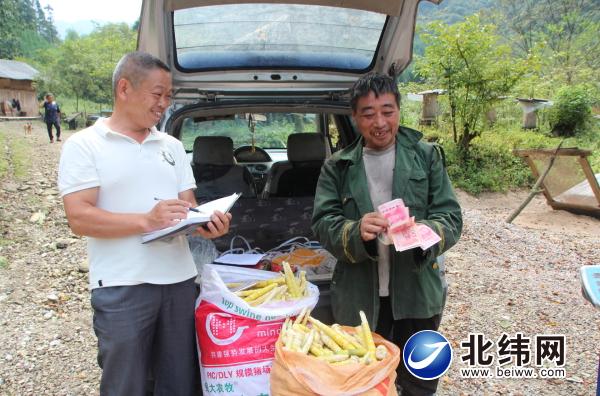Printable, flexible battery offers 10 times the density of lithium
Scientists investigating an experimental battery chemistry have wound up with a flexible device they say offers up to 10 times the energy density of current lithium-ion solutions, making it an ideal fit for a number of applications. The technique also allows for easier manufacturing of flexible batteries, with the researchers claiming the resulting device can be tailored to fit with electronics devices, rather than the other way around.
The work was carried out by scientists at the University of California (UC) San Diego, and focuses on a type of battery chemistry known as silver-oxide zinc. This has long been fancied as a promising alternative to lithium-ion designs, due to its greater energy density and safety, but a few roadblocks stand in the way of widespread adoption, namely an instability that leads to a limited cycle life.
The UC San Diego team addressed this by incorporating a new cathode material from Californian company ZPower, a long-time purveyor of batteries incorporating silver and zinc. This cathode uses a lead oxide coating to improve the battery’s electrochemical stability and conductivity, along with reducing its impedance, which is the battery’s resistance to an alternative current.
Armed with this new cathode, the researchers set out to do something that hadn’t been done before, which is screen print a silver oxide-zinc battery. While this chemistry is favored for most commercial flexible batteries, they need to be pieced together under sterile conditions in a vacuum to counter chemical instability and high oxidation.
Through experimentation, the team came up with an ink formulation they say now makes printing these batteries possible. Layer-by-layer, the battery’s current collectors, zinc anode, new cathode and separators are screen-printed onto a chemically stable polymer film, which has a high melting point of around 200 °C (392 °F).
The result of this is a flexible, stretchable battery with an areal capacity of 50 milliamps per square centimeter, which the team says is 10 to 20 times greater than that of a typical lithium-ion battery. All up, the team says the device can provide five to 10 times more power than a typical lithium-ion battery of the same size.
(责任编辑:关于我们)
 Abrar Ahmed returns as Pakistan names squad for second Test against Bangladesh
Abrar Ahmed returns as Pakistan names squad for second Test against Bangladesh “薯”你重磅!云浮云城“番薯王”惊艳亮相广东种业大会
“薯”你重磅!云浮云城“番薯王”惊艳亮相广东种业大会 创新理念谋发展 因地制宜助奔康
创新理念谋发展 因地制宜助奔康 Amy Schumer supports NFL protesters by saying no to Super Bowl ads
Amy Schumer supports NFL protesters by saying no to Super Bowl ads How to unblock Xnxx for free
How to unblock Xnxx for free
- “精致小春姐”顾春芳:华丽白西装、镶钻水晶拖鞋,带来新兴凉果No.1
- Top nuclear envoys of S. Korea, Japan hold phone talks on cooperation for peninsula peace
- People raised $36k for a Starbucks barista after he asked a 'Karen' to wear a mask
- Vice FM Choi holds talks with Iranian counterpart on frozen Tehran assets, JCPOA
- SpaceX Polaris Dawn mission: How to watch the launch
- 收购价、零售价双升,潮州橄榄喜迎丰收年!
- How should you take your Equifax data breach settlement?
- Facebook wants its augmented reality glasses to read your mind
-
[From the Scene] How ‘world’s first oil town’ is wrestling to become ‘green'
![[From the Scene] How ‘world’s first oil town’ is wrestling to become ‘green'](http://res.heraldm.com/content/image/2024/08/26/20240826050707_0.jpg) City of Baku, Azerbaijan (Getty Imgage)BAKU, Azerbaijan -- Driving just a few miles from the venue o
...[详细]
City of Baku, Azerbaijan (Getty Imgage)BAKU, Azerbaijan -- Driving just a few miles from the venue o
...[详细]
-
Seoul expresses 'strong regret' over Pyongyang's continued missile launches
 People at Seoul Station, Monday, watch TV footage of a North Korean missile launch. North Korea fire
...[详细]
People at Seoul Station, Monday, watch TV footage of a North Korean missile launch. North Korea fire
...[详细]
-
 10年前,天全县鱼泉乡青元村后山还是一片荒芜,如今却是层峦叠翠的竹海。2017年,鱼泉乡方竹面积已达30000余亩。自从栽种方竹以来,许多贫困户陆续成为致富带头人,方竹成为鱼泉乡的产业支撑。“生态资源
...[详细]
10年前,天全县鱼泉乡青元村后山还是一片荒芜,如今却是层峦叠翠的竹海。2017年,鱼泉乡方竹面积已达30000余亩。自从栽种方竹以来,许多贫困户陆续成为致富带头人,方竹成为鱼泉乡的产业支撑。“生态资源
...[详细]
-
The Google walkout in Los Angeles was private and restrained
 Is it really a walkout if you barely... walk out?Google offices around the world protested sexual ha
...[详细]
Is it really a walkout if you barely... walk out?Google offices around the world protested sexual ha
...[详细]
-
Wordle today: The answer and hints for August 27
 Can't get enough of Wordle? Try Mashable's free version nowOh hey there! If you're here, it must be
...[详细]
Can't get enough of Wordle? Try Mashable's free version nowOh hey there! If you're here, it must be
...[详细]
-
Stephen Colbert calls John Bolton 'naive' during no
 If John Bolton was expecting an easy interview with Stephen Colbert, he was way off base.Appearing o
...[详细]
If John Bolton was expecting an easy interview with Stephen Colbert, he was way off base.Appearing o
...[详细]
-
Top nuclear envoys of S. Korea, Japan hold phone talks on cooperation for peninsula peace
 Flags of Japan and South Korea (123rf)South Korea's chief nuclear envoy, Noh Kyu-duk, held phone tal
...[详细]
Flags of Japan and South Korea (123rf)South Korea's chief nuclear envoy, Noh Kyu-duk, held phone tal
...[详细]
-
 雅安日报/北纬网讯近日,市中级人民法院建立以相关负责人和刑事审判业务骨干为主要审判力量的两个扫黑除恶专项审判合议庭,进一步加强黑恶势力犯罪案件及“关系网”“保护伞”案件的专业化审判,精准打击黑恶势力。
...[详细]
雅安日报/北纬网讯近日,市中级人民法院建立以相关负责人和刑事审判业务骨干为主要审判力量的两个扫黑除恶专项审判合议庭,进一步加强黑恶势力犯罪案件及“关系网”“保护伞”案件的专业化审判,精准打击黑恶势力。
...[详细]
-
 老街社区“爱心助老餐吧”供应午餐8月21日下午,雨城区东城街道水中社区内,不少居民早早来到课堂,准备参加瑜伽课。这是水中社区开办的社区学堂,除了瑜伽,茶艺、书法、古琴等课程也深受社区居民的喜爱,人气火
...[详细]
老街社区“爱心助老餐吧”供应午餐8月21日下午,雨城区东城街道水中社区内,不少居民早早来到课堂,准备参加瑜伽课。这是水中社区开办的社区学堂,除了瑜伽,茶艺、书法、古琴等课程也深受社区居民的喜爱,人气火
...[详细]
-
It's impossible to resist the charms of these 'Poorly Drawn Cats' on Twitter
 This is Ode To..., a weekly column where we share the stuff we're really into in hopes that you'll b
...[详细]
This is Ode To..., a weekly column where we share the stuff we're really into in hopes that you'll b
...[详细]


